Texas Rig, Carolina Rig und Twitch Weights
The Texas Rig and the Carolina Rig have become standard methods for many predator anglers. In contrast to fishing with jig heads or bottom jigs, the lead, in this case brass, is rigged free-running onto the leader, allowing the soft bait to sink slowly. A rarely used new fishing method is the use of twitch weights, which will be briefly explained at the end of this blog post.
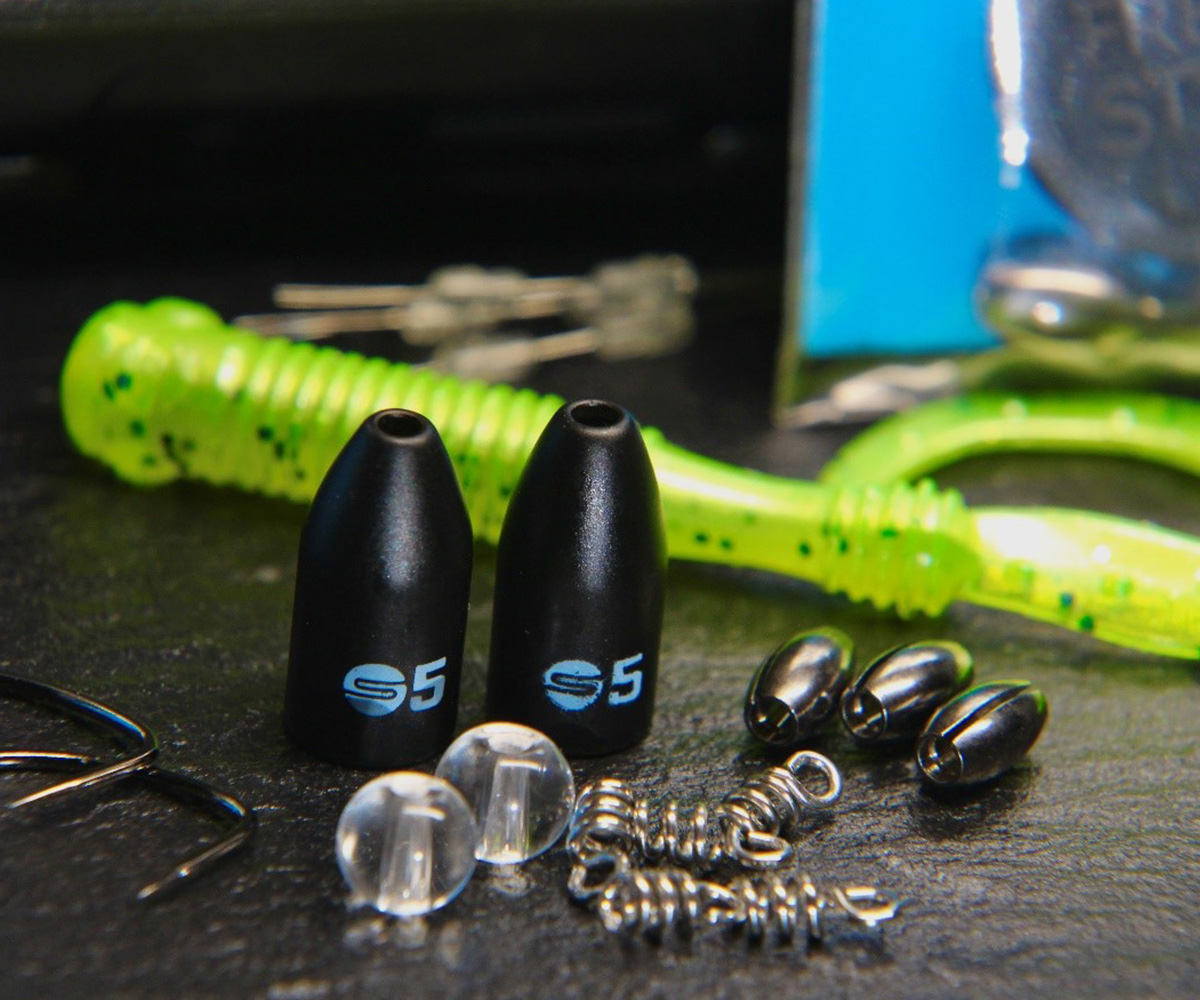
The Texas Rig (T-Rig for short)
The Texas Rig can be assembled in a no time with very little material. The first thing you need is a suitable leader. As a rule of thumb, a fluorocarbon thickness of 0.20mm-0.30mm is sufficient for perch and a leader thickness of over 0.30mm should be chosen for zander. If the predators are very shy I would use a thinner leader, but if the bottom is edgy with lots of sharp stones I would tend to use a thicker fluorocarbon. Once we have tied the right leader to the main line, it is optional to put a line stopper (1) onto the leader and move it back about 30cm. This stops the bullet weight moving too far backwards so that it cannot slide too far away from the lure and we can still feel the bites. Now, as already mentioned, the bullet weight (2) comes onto the leader with the pointy side first. An important part of the rig that should not be underestimated is the glass bead (3). In combination with the bullet, it produces a small bang when it hits the hook, which draws the attention of the perch to the bait. Finally, the hook is tied to the leader with the soft bait (4), an offset hook with a large bend is best so that the hook does not get stuck on snags but can still hook the fish well when it bites.
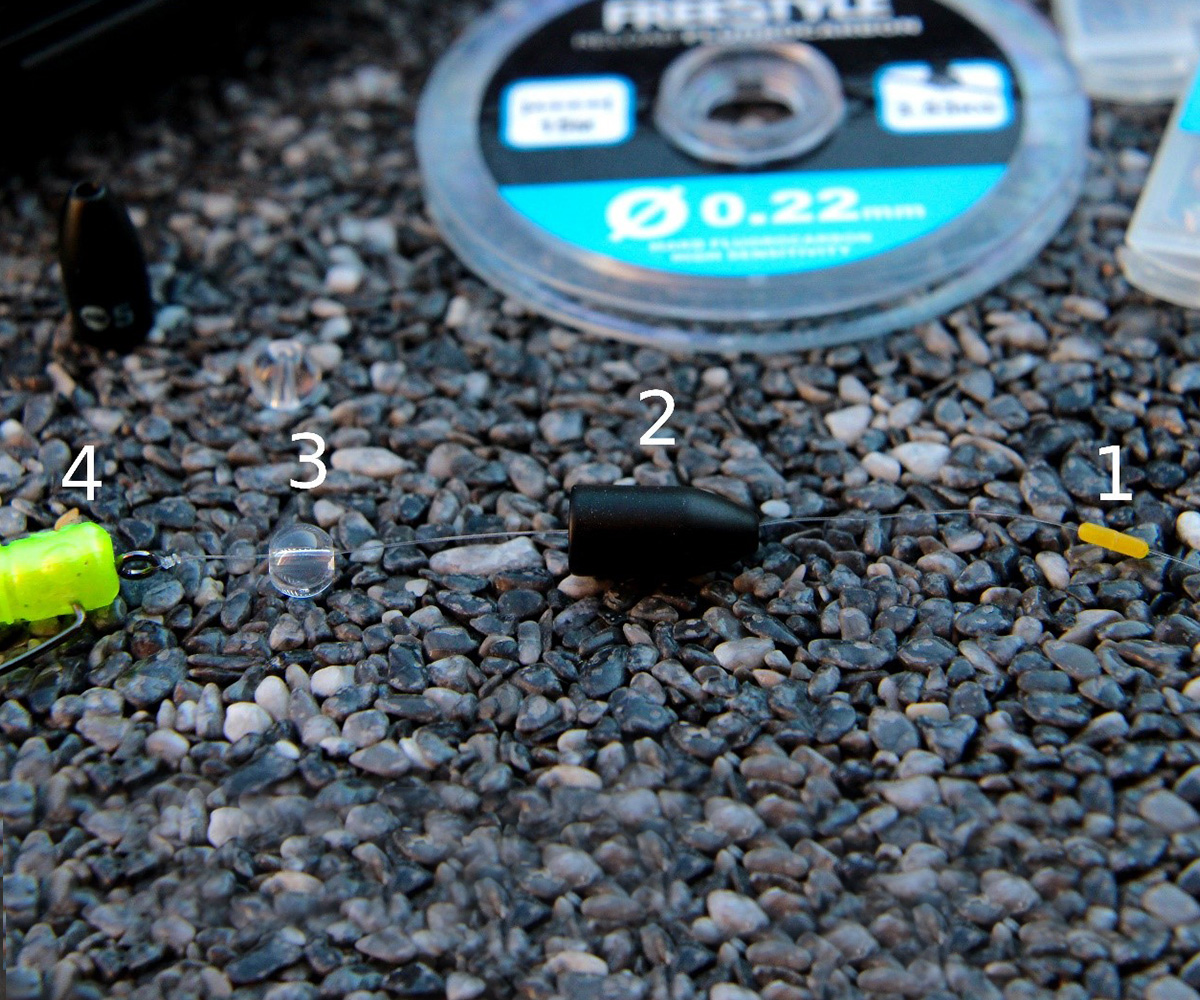
The T-rig has the advantage that it can be fished between dead wood, water lilies and other obstacles without getting stuck and if it does, wiggling the rod is often enough to loosen the wedged bullet.
Why the rig is so catchy is explained by its underwater behaviour. When casting into the water, the bullet quickly sinks to the bottom and the lure slowly tumbles behind it. As soon as a small jerk is made with the rod or the line is cranked in short and fast, the Bullet Weight rises briefly, collides with the glass bead and produces the interesting “click” sound, after which it sinks to the bottom again. During the sinking phase, the line should not be at full tension to allow the bullet to come off the lure, or take long breaks and let the soft lure play its own action as it tumbles down. In some waters the fish are put off by the “click” sound, in which case it is advisable to replace the glass bead with a silicone weight stopper. Without the noise, the rig still has the advantage that the lure can tumble almost without resistance in the water to the bottom.
Almost all paddles, twisters and creature baits are suitable as baits. Twisters and creature baits, however, can generally be fished more slowly than paddles. Before I mount my soft bait on the offset hook, I recommend using a lure loop, as particularly soft, soft lures can quickly tear out in the nose area when bitten and are therefore no longer fishable. The Lure Loop prevents this and helps us to have more fun with the same soft lure.
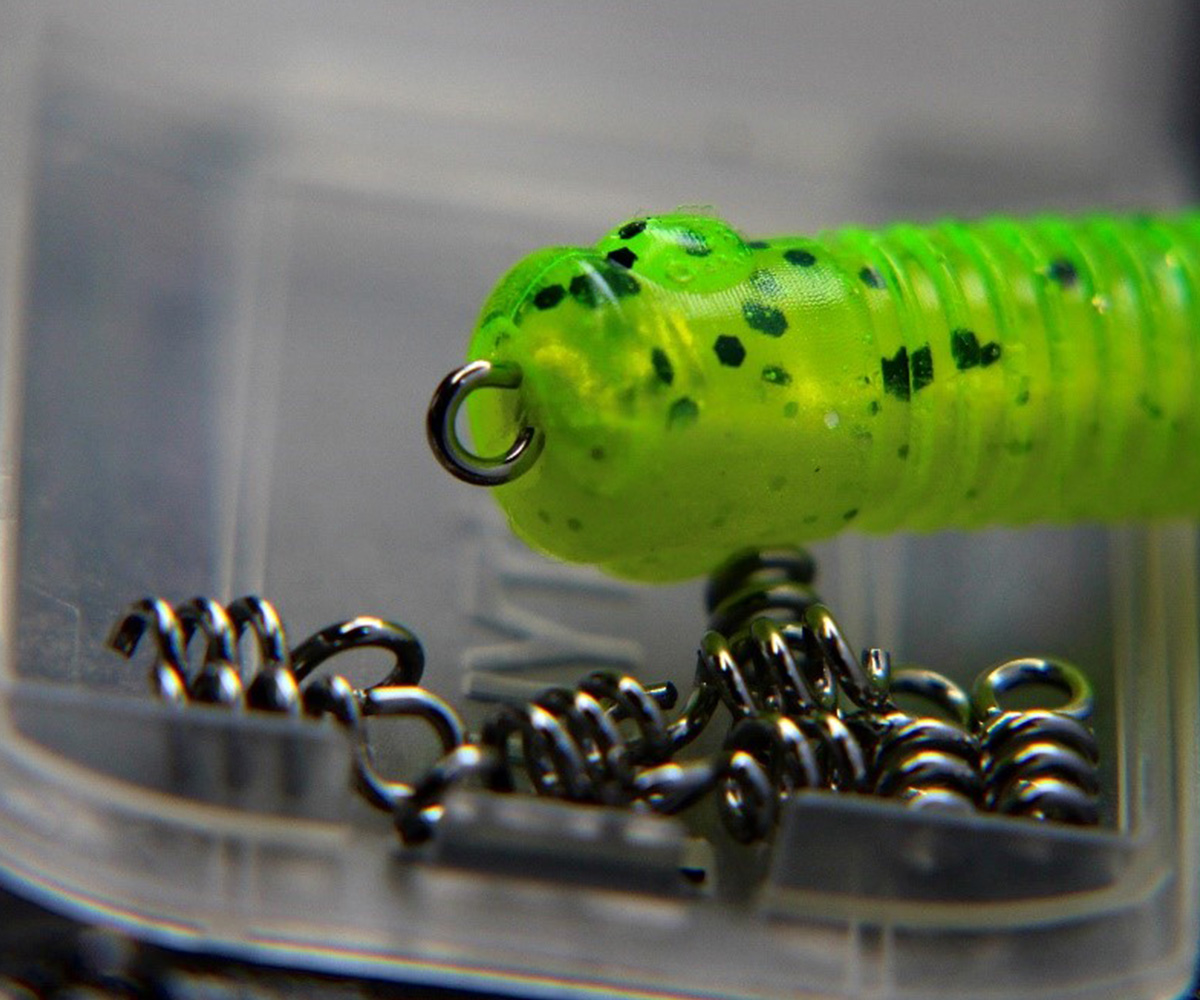
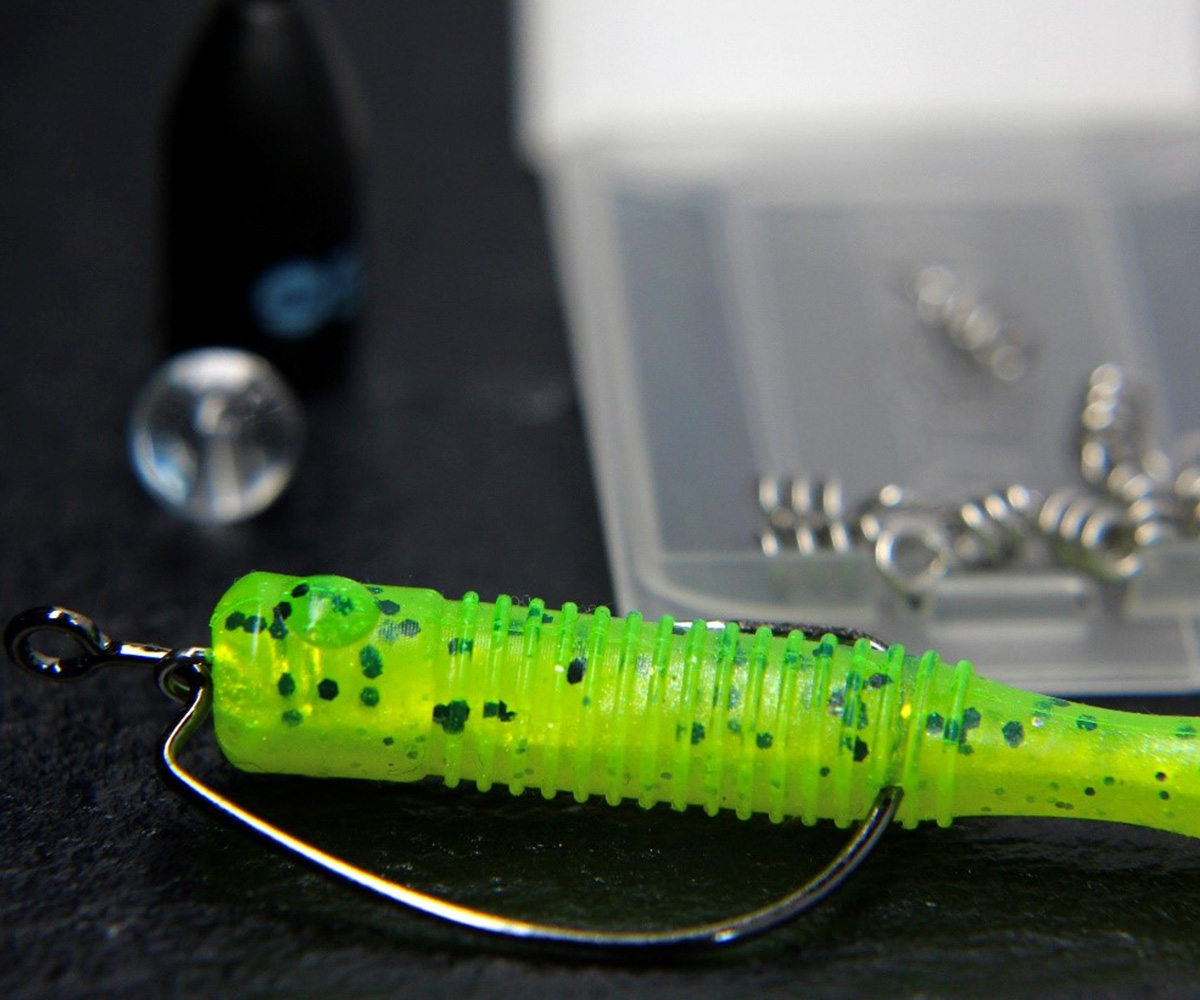
The Carolina Rig (short: C-Rig)
The Carolina Rig has basically only one small change compared to the Texas Rig, but in certain situations it can make a big difference. It is the distance between the bullet weight and the lure that allows for a significantly longer sinking phase. In addition, in very deep waters or in strong currents, heavier bullets can be fished without the sinking phase being greatly affected.
For this rig we pull the bullet weight and the glass bead (2) onto a slightly thicker fluorocarbon leader (1) and then tie it to a barrel swivel (3). Then we attach a thinner leader (4) to the swivel with the offset hook (5). The thicker leader in front of the swivel protects against damage, for example from sharp shells, which is not possible with the T-rig.
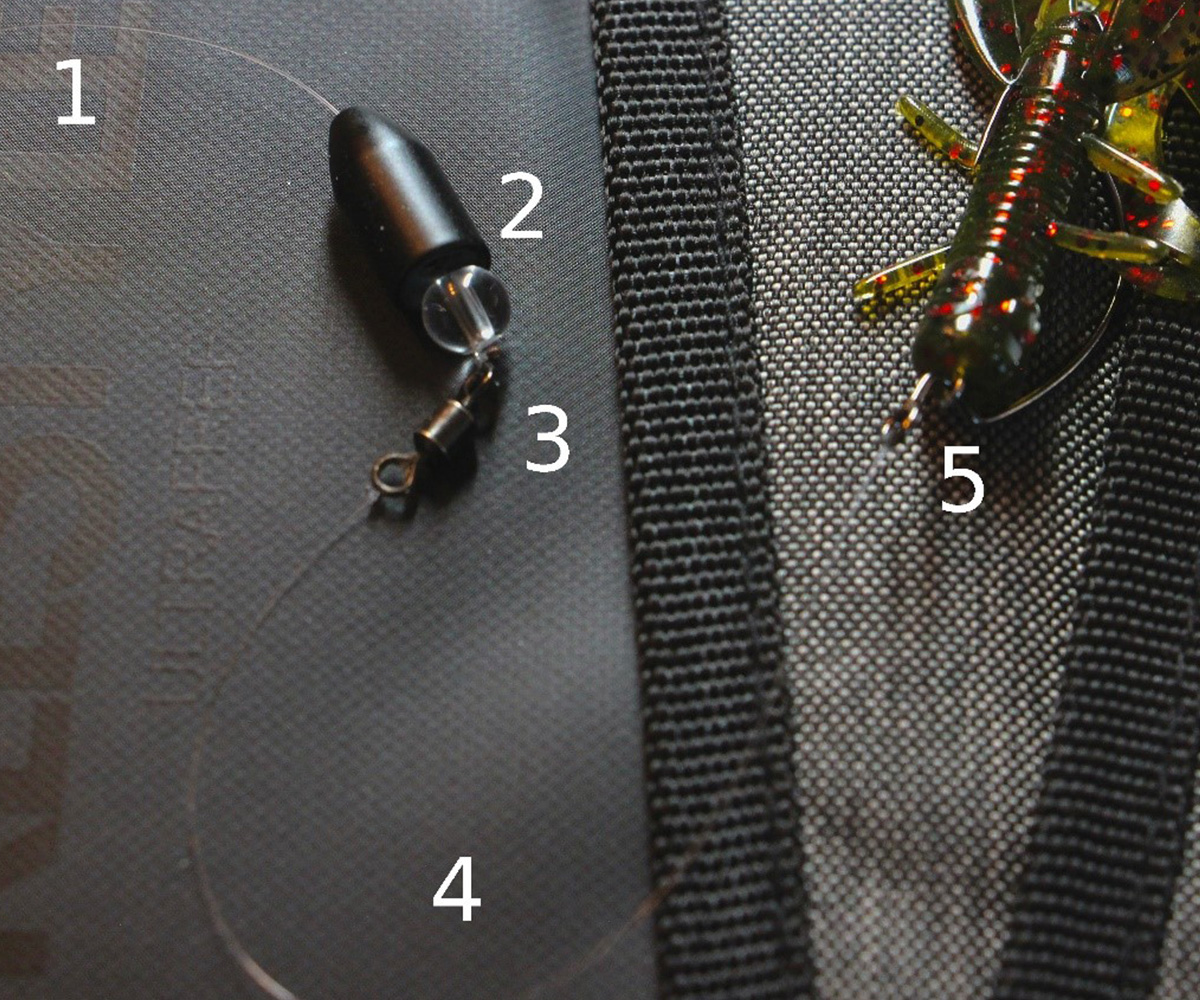
With the C-rig you can use exactly the same baits as with the T-rig. However, I prefer to fish creature baits that, like the Hog, have strong inherent actions on their own during the breaks.
If you want to do without the stronger leader at the beginning, there is an easy way to use the Texas Rig and Carolina Rig in an adjustable rig. To do this, we pull the bullet weight and the glass bead onto the leader as usual and then a line stopper. This can now either be pulled all the way onto the hook and we have the Texas Rig, or we move it as far away from the hook as we like and it becomes the Carolina Rig. When putting on the line stopper, make sure that the fluorocarbon is dry, otherwise the stopper will slip more easily.
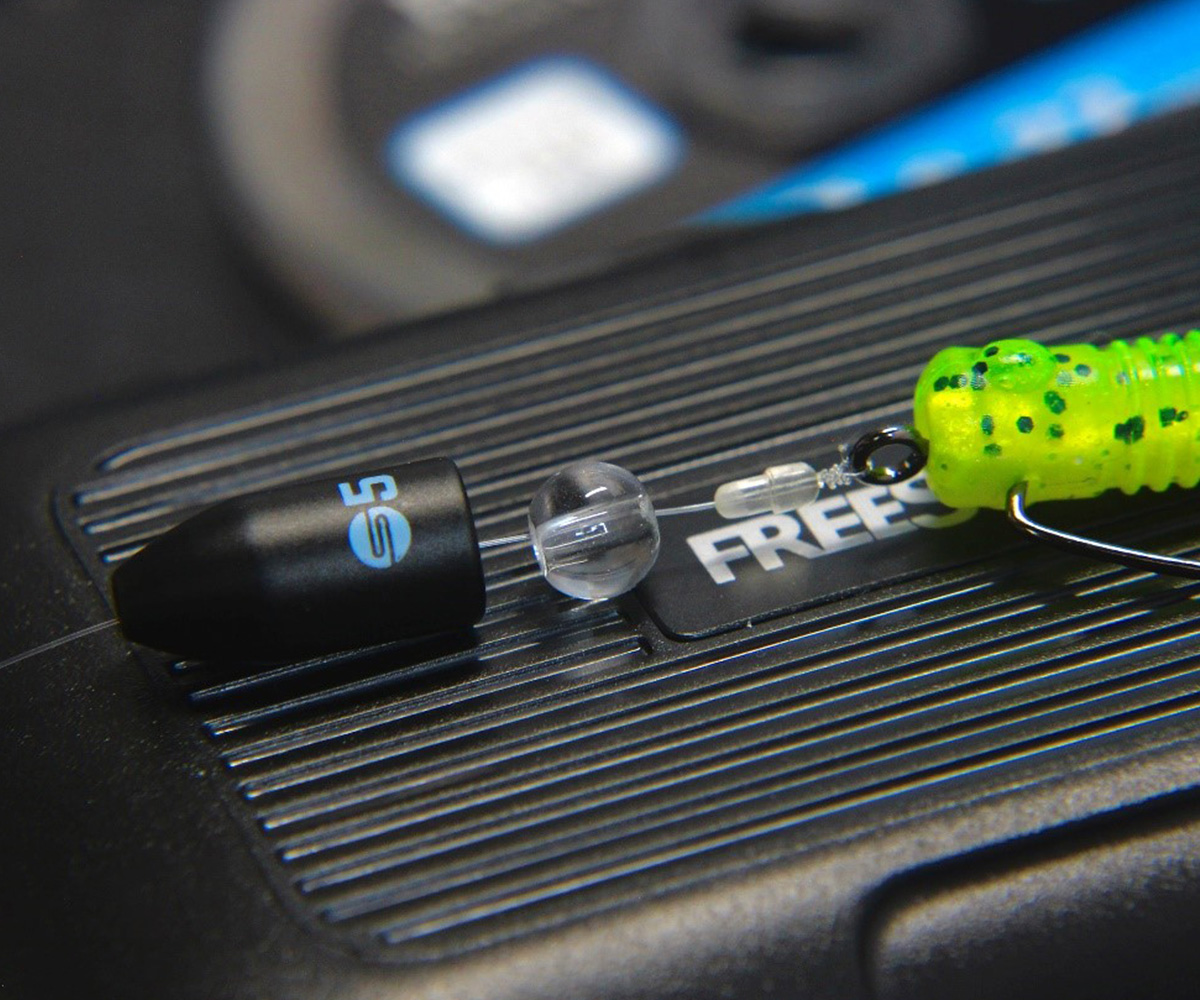
The Twitch Weight
Twitch weights allow us to offer the soft lure even more naturally and weightlessly than with the Texas and Carolina Rig. To attach the particularly light brass weights, two rubber stoppers are pulled onto the leader. The weight is subsequently placed with the open side on the line and between the stoppers and then fixed by pushing the rubber stoppers together. This simple method of fixing allows the weight to be quickly changed and moved around on the leader.
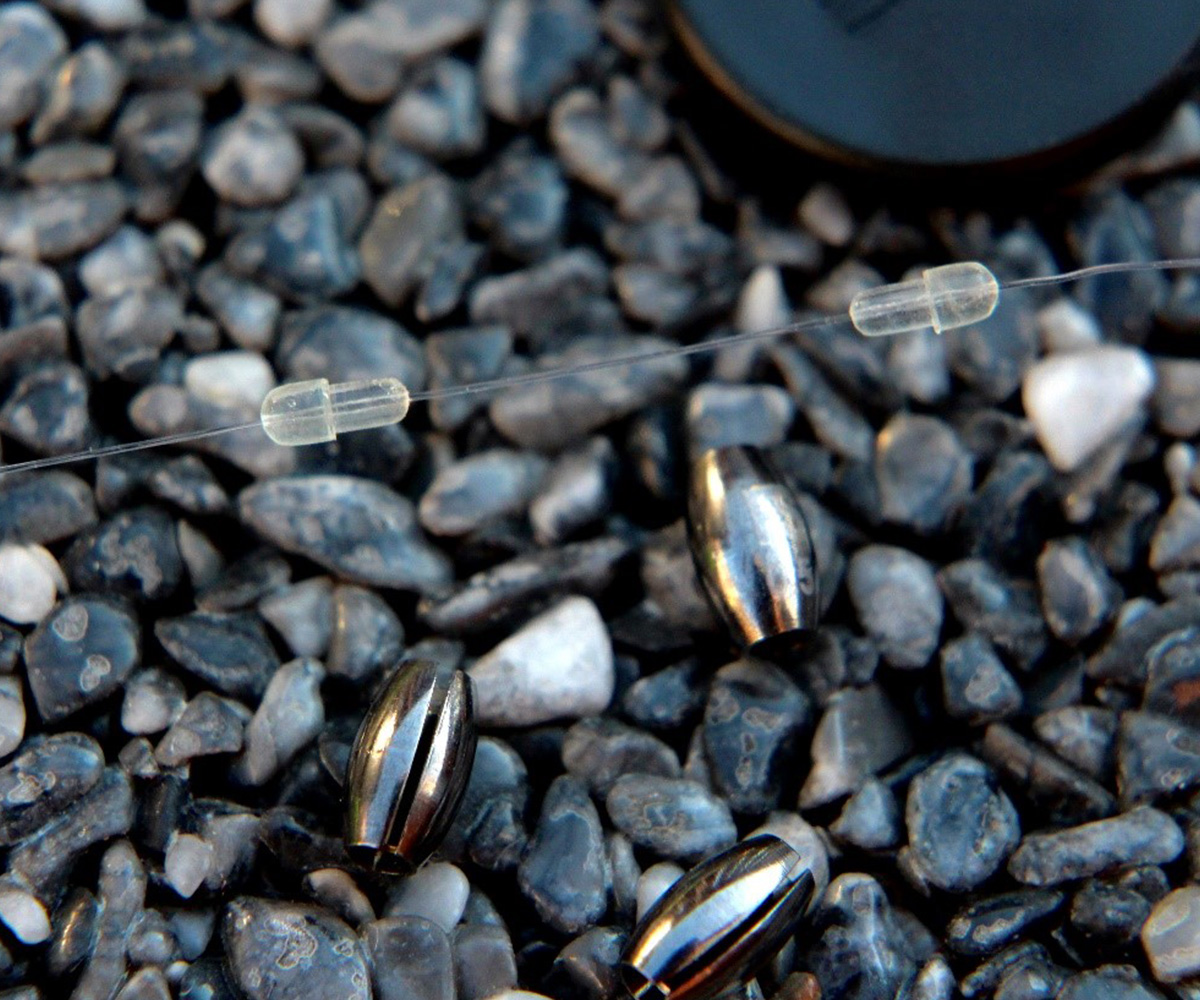
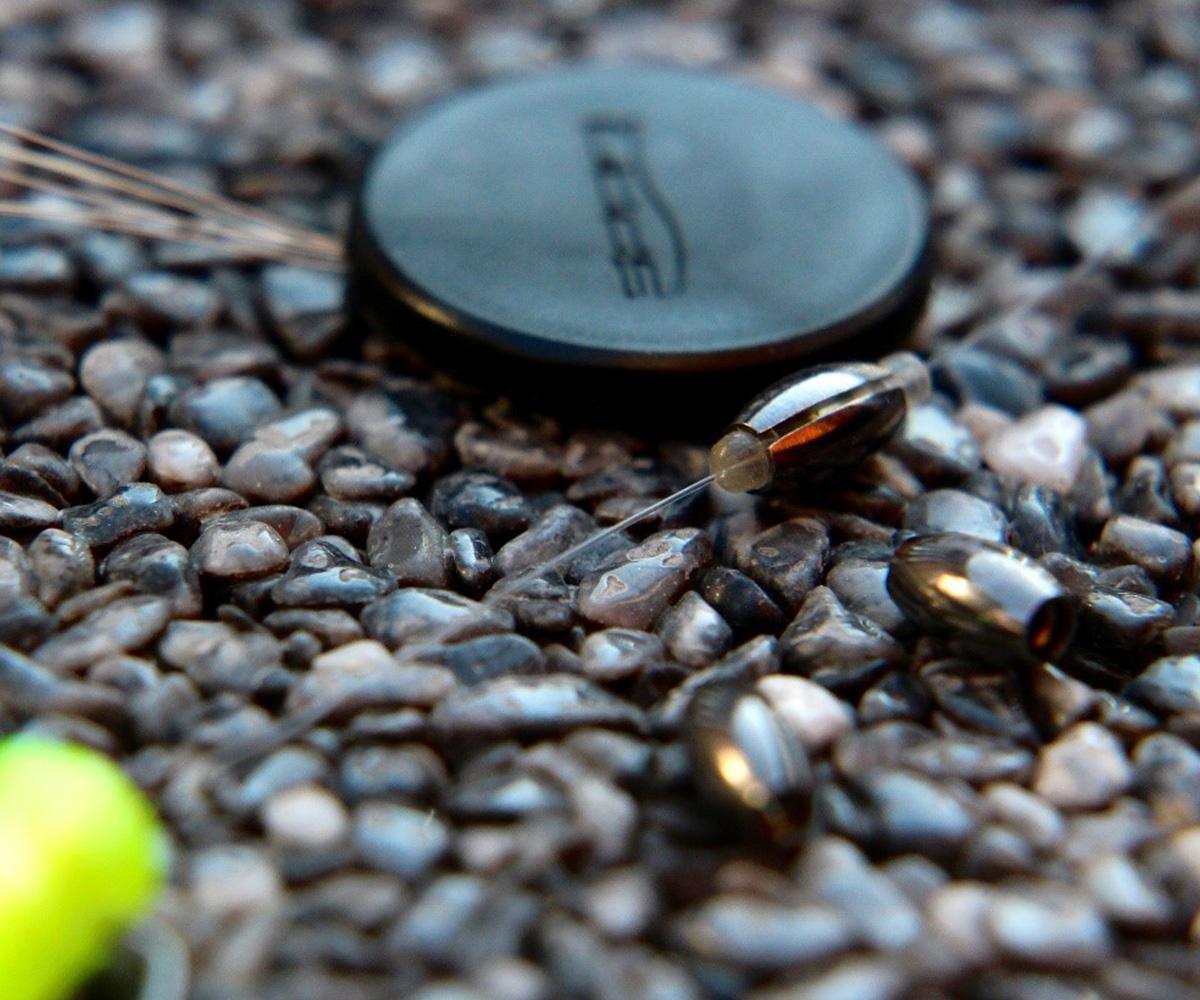
Twitch weights are best “weighted”, which means that you pull the line in evenly and strike the rod tip from the wrist in the direction of the water surface. These strokes can be done sporadically, but also more often in succession, depending on whether the lure is to be presented slowly or quickly.
For me personally, twitch weights are always used when I am fishing in a light current and want the lure to drift towards me naturally (without artificial sinking by heavy weights). They also work extremely well in very shallow trenches. At my local urban water there is a section that is hated by anglers because the water is only 15-20cm deep in places and the perch startle very quickly when the jig heads are thrown in. In addition, most jig heads are too heavy and quickly get stuck in the muddy silt. The light Twitch Weight, on the other hand, comes up quietly on the surface of the water and is not affected by the muddy substrate, especially when the hook is set with a floating rubber fish from the Urban Prey collection.
Try it, you’ll be surprised!
Nick from Crazy Tackle (Instagram)
